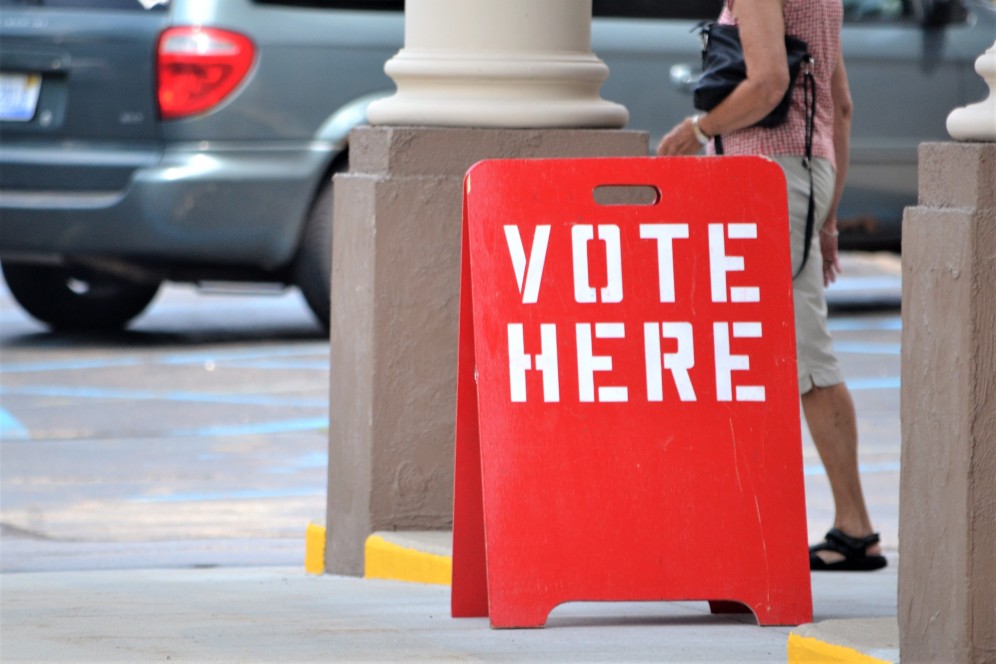by Liz Ann Sonders, Jeffrey Kleintop, Kathy Jones, Charles Schwab & Company
With economic momentum having slowed, investors likely will shift their focus to third-quarter earnings for clues about future market direction—although actual earnings numbers may be less important than what corporate leaders say about their expectations. Business leaders are more confident in their outlook than when they reported second-quarter results, according to global business surveys. Bond markets also have moved from cautious to optimistic over the past few months, as reflected in rising longer-term Treasury yields.
Can this optimism last? There are risks, of course, notably a potential resurgence in global COVID-19 cases. However, there are also reasons for optimism, which we discuss below.
U.S. stocks and economy: Economic momentum has slowed
As we enter the final quarter of the year, economic momentum has slowed from its summer peak. Some pockets of the economy have continued to hold up well—such as housing and retail sales, boosted by persistently-low rates and government aid, respectively. Yet other areas, such as restaurants and travel, have not given any indication yet of a pickup in growth.
Given that the bounce in activity off the extreme April lows is behind us, economic data relative to expectations—as measured by Citi’s Economic Surprise Index—have cooled. Put simply, actual reported data has come in below economists’ estimates, which contrasts with the spike earlier in the year when estimates were at extreme lows. As the chart below shows, we are still near record territory relative to history, but the pace is slowing.
Economic improvements and beats are slowing
Source: Charles Schwab, Bloomberg, as of 10/14/2020.
Investors may begin to shift focus to corporate earnings. S&P 500 earnings growth is picking up as profits move off their crisis lows amid companies benefiting from pent-up demand. While we remain in an earnings recession, forward estimates continue to improve. As you can see in the chart below, growth is expected to turn positive in 2021.
An earnings recovery is on the horizon, but there are caveats
Source: Charles Schwab, I/B/E/S data from Refinitiv, as of 10/15/2020. For illustrative purposes only. Past performance is no guarantee of future results.
There are caveats to earnings’ presumed strength—one being the simple fact that year-over-year comparisons will be “easier” next year. Given the abrupt plunge in the economy during the first and second quarters of this year, the slightest rebound in activity and profits during the same period in 2021 will boost growth rates markedly. That assumes we return to an environment where demand comes back and profits along with it—which is not guaranteed given the virus’ unknown trajectory from here.
Additionally, given the pandemic’s effect on reopening efforts and overall economic activity, many companies are still not providing forward guidance, which could mean estimates are too high and at risk of decelerating should the virus worsen.
Meanwhile, investor sentiment remains a mixed bag. As U.S. stocks have continued to improve from their September weakness, some measures of sentiment—like the Cboe equity put/call ratio shown below—are still showing signs of complacency. The ratio ticked up during the selloff but didn’t spike to anywhere near its levels during the March plunge into bear market territory.
Equity put/call ratio still hovering near historic lows
Source: Charles Schwab, Bloomberg, as of 10/15/2020.
A put/call ratio hovering near historic lows is typically a warning sign of speculative froth, but attitudinal measures of sentiment like AAII’s bull/bear ratio haven’t reflected the same risk—underscoring the difference between investors’ opinions and their actual positioning.
Another risk is the S&P 500’s forward price-earnings (P/E) ratio, which sits near the all-time highs reached during the tech boom/bust in the 1999-2000 era. That said, interest rate-based valuation metrics—like equity risk premiums—suggest stocks are undervalued. Comparisons to the tech-bust era also come with caveats—one of them being the fact that the five largest stocks today have an average forward P/E ratio of 32.1, way below the 60.2 average of the five largest stocks in March 2000.
Global stocks and economy: Looking to earnings season
Companies may not beat analysts’ earnings per share (EPS) estimates for this earnings season as dramatically as they did last quarter, despite a positive tone. Business leaders are much more confident in their outlook than when they reported second-quarter results, according to business surveys from around the world, including the U.S. Institute for Supply Management (ISM) indexes, the German IFO Business Climate Index, and the French INSEE. All these sentiment indexes climbed back to near or above pre-COVID levels at the end of the third quarter, after having bottomed in the second quarter.
Looking back to the second quarter, cuts to analysts’ EPS estimates lowered the bar for companies around the world. Subsequently, those companies’ results exceeded analysts’ targets by a wide margin. For the third quarter, the trend has been different. Since July, more analysts have been raising EPS estimates for companies in the MSCI World index than lowering them, as you can see in the chart below. This could mean companies may not beat this quarters’ estimates by the same margin that they did last quarter.
More than half of analysts’ changes to companies EPS have been upward since July
Source: Charles Schwab, FactSet data as of 10/8/2020. Past performance is no guarantee of future results.
With companies’ earnings unlikely to surprise by as wide a margin as last quarter, stocks’ stronger performance during this earnings season may require three key messages from business leaders:
- Cost cuts are behind them, including job cuts after recent big announcements from many companies, including Walt Disney Co., Allstate Corp., and Exxon Mobil Corp.
- Precautionary cash hoards may be paid out in the form of dividends in 2021, after companies suspended or cut dividends this year by the most since 2009.
- Despite the slowdown in economic momentum as the third quarter matured, companies are not likely to issue warnings about fourth-quarter earnings growth.
Acknowledging that the future business outlook is dependent upon many uncertainties and that despite improving confidence business leaders may be unwilling to commit to any of the above, markets may yet welcome upbeat assessments of these issues.
For companies in most major countries, although EPS are still down substantially from a year ago, they are up sharply from the second quarter. More importantly, they are expected to continue to rebound over the next year. Historically, the global purchasing managers index (PMI) has been a good indicator of analysts’ expectations for the next year’s earnings growth. Even if the index pauses at current levels with a slowdown in the global economic recovery, the PMI implies an ongoing rebound in analysts’ consensus outlook to near double-digit EPS growth over the next 12 months, as you can see in the chart below.
Analysts’ EPS estimates may continue to track the rising PMI
Source: Charles Schwab, Macrobond, IHS Markit, Data as of 10/8/2020. Past performance is no guarantee of future results.
Earnings connect what’s happening on Main Street to stock prices on Wall Street. High expectations for growth in profits may make the words used by business leaders more impactful this reporting season.
Fixed income: The winding road to recovery
The bond markets have moved from cautious to optimistic over the past few months. Hopes for another round of fiscal aid from Congress and the Federal Reserve’s shift to an average inflation target helped propel long-term bond yields higher. The result is a steeper yield curve, typically a sign that investors expect stronger growth and inflation ahead. Similarly, lower-rated bonds, like high-yield corporates, have outperformed Treasury bonds, a sign that investors are willing to take more credit risk as worries ease about the ability of the issuers to repay debt and principal.
Yield curve continues to steepen as the economy improves
Source: Bloomberg. Market Matrix U.S. Sell 5 Year & Buy 30 Year Bond Yield Spread (USYC5Y30 Index). Daily data as of 10/12/2020.
We’re also optimistic that the recovery will remain intact, and some form of additional fiscal aid is likely eventually, but we worry that the road ahead is filled with potholes. The timing of fiscal relief is one concern. If it’s delayed until January or beyond, there’s a risk that the economy will lose momentum, causing growth to slow. There are already signs of slowing in the job market, where companies have announced major layoffs due to lack of demand. In the public sector, layoffs already have begun by state and local governments due to budget shortfalls. Because state and local government employment accounts for about 13% of nonfarm payrolls, the job losses can dampen the economy’s ability to rebound.
State employment drops to the lowest level in nearly two decades
Source: Bureau of Labor Statistics. Monthly data as of 9/30/2020.
A resurgence in coronavirus cases is also a limiting factor for the optimistic scenario. As another wave of infections spreads, consumers may grow cautious about congregating, and curtail spending on services like travel and restaurants until there is a vaccine available. Most estimates of the timing for a viable and widely distributed vaccine are for mid-2021 at the earliest. Consequently, the service sector could continue to drag on growth.
While the Federal Reserve’s adoption of an average inflation target is supportive to expectations for growth, it isn’t certain to succeed. The intent is to see how low the unemployment rate can fall before inflation picks up. Unlike previous cycles, the Fed would not hike rates pre-emptively as the unemployment rate falls.
However, the Fed has undershot its 2% inflation target for most of the past decade. Just saying that it will tolerate higher inflation won’t necessarily make it happen. Moreover, if long-term bond yields rise too fast or too much, the Fed could ramp up its bond buying program with purchases of long-term bonds to hold down yields. After surging earlier in the year, the Fed’s bond purchases have leveled off over the past few months.
The Fed's weekly Treasury purchases have leveled off over the past few months
Source: Bloomberg. Federal Reserve US Treasury Sec All Change in Wednesday Level (MATDTSAW Index) and Federal Reserve Balance Treasury Securities Held (FARWUST Index). Weekly data as of 9/30/2020.
While the market appears to be discounting an optimistic economic outlook ahead, we think investors should be aware of the potential bumps in the road. For fixed income investors, we favor keeping average portfolio duration low to mitigate the risk of higher interest rates. We see the potential for 10-year Treasury yields to rise to 1% in the next few months. We also favor holding a broadly diversified portfolio with exposure to an array of global asset classes as the best approach to dealing with the potential volatility ahead.
Copyright © Charles Schwab & Company























